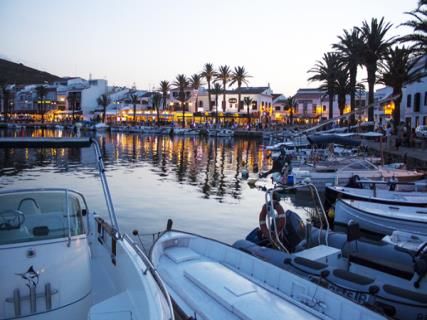Menorca Guide
History of Menorca
Menorca has been, from prehistory to very recent times, a crossroad point for many different cultures because of its strategic situation in the centre of the western Mediterranean. It has been considered both a port of call and a place of refuge by these different races. They have left the island a rich historical legacy.
Menorca has been, from prehistory to very recent times, a crossroad point for many different cultures because of its strategic situation in the centre of the western Mediterranean. It has been considered both a port of call and a place of refuge by these different races. They have left the island a rich historical legacy.
Human presence on the island can be traced back from the early Bronze Age (2000 AD), called the pre-talayotic period. Towards 1400 AD these inhabitants built huge stone constructions known as talayots, this era encompasses the richest period of island pre-history, and its most exceptional monument was the taula.
In the year 123 AD Menorca became part of the Roman empire, which transformed the talayotic villages and gave rising power to the three cities built on harbours: Mago (Maó), Jamma (Ciutadella) and Sanisera (Sanitja).
After the decline of Rome - like the rest of the Balearic archipelago - Menorca suffered successive invasions by vandals and Byzantines, until at the beginning of the X century it became part of Islam, initially ruled by the Emirate of Córdoba and later by the Tarifa of Denia.
After almost 400 years of Muslim domination, in 1287 the christian king Alfonso III the Liberal conquered Menorca and placed it under the rule of the crown of Aragón and then the kingdom of Majorca. During this period from the XIII to the XVIII century, and which included the gothic and baroque era, the island hoarded the most important jewels of artistic and architectonic heritage.
Nevertheless it was this stage, specifically during the XVI century, that Menorca lived its most tragic moments in history, with incessant invasions by pirates who caused huge unrest and suffering amongst the inhabitants, and which ended with the destruction by the Turks of Maó in 1535 and Ciutadella in 1558, leaving the island on the verge of total abandonment.
In the XVIII century Menorca was transformed once again as a result of European events and this time, due to the the War of Succession, it fell into English hands in 1713. The island remained in their power for the next hundred years with the exception of some brief periods of French and Spanish rule. During this time the English reinforced the coastal defenses and built important public buildings.
The XIX and XX centuries were equally multinational due to the continuous arrival of foreign troops to the port of Maó, which was a free port for the first few years. In this period the Lazareto and the Fortress of Isabel II in La Mola were both built in the Port of Maó. And then, during the XX century, Menorca was heavily involved in the Spanish Civil War from 1936 1939.
The XX century saw the development and success of many different industries on the island, but from the 80’s tourism became the primary source of income and work. This period also saw the transition of democratic progress with the development of independent local institutions and island-government.
Download your private guide!
Top Transport
-
 Autos Valls Rent a CarRent a Car Maó - Mahón
Autos Valls Rent a CarRent a Car Maó - Mahón
-
 Autos Valls Rent a Car, MahónRent a Car Maó - Mahón
Autos Valls Rent a Car, MahónRent a Car Maó - Mahón -
 Autos Valls Rent a Car, In Son BouRent a Car Son Bou - Alaior
Autos Valls Rent a Car, In Son BouRent a Car Son Bou - Alaior -
 Autos Valls Rent a Car, Calan BoschRent a Car Cala en Bosch- Ciudadella
Autos Valls Rent a Car, Calan BoschRent a Car Cala en Bosch- Ciudadella -
 Autos Valls Rent a Car, Cala GaldanaRent a Car Cala Galdana - Ferrerías
Autos Valls Rent a Car, Cala GaldanaRent a Car Cala Galdana - Ferrerías - View all
Favorites
- no_favorite
Latest reviews

Pedreres d'Hostal
SightseeingThe old quarries are fascinating by themselves, the scale of the more modern one from the last century cut ...

Galmés Tower
SightseeingAfter visiting this site many times over the years more and more has been excavated showing in a better way...

Trencada Tower
SightseeingI love this site so peaceful the taula remains but it’s precinct is gone but there are other parts left aro...

Camí de Cavalls
SightseeingAbsolutely amazing journey, I have walked it 7 times

Son Saura
SightseeingLovely beach, great for families!

Cala en Porter
SightseeingLovely place, very pretty, nice food and cocktails. Quiet place and not too much to do but nice for beach a...

Cala Mitjana
SightseeingThis sand beach is some 10min walk from the free parking. It is quite crowded. The water is crystal clear, ...

Sa Mesquida
SightseeingCar park and parking on the road with a walk down to the beach on good footpath Lovely sandy beach with a...

Cala en Bosch
Sightseeinga very crowded beach. it can become quite difficult to find a free parking place if you arrived by car. it ...

Arenal d'es Castell
SightseeingAlthough crowded on most days, the beach and water were very clean. Almost no one is swimming further from ...






























